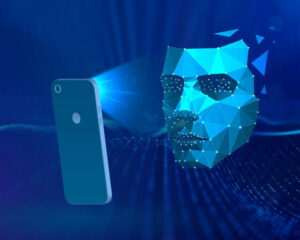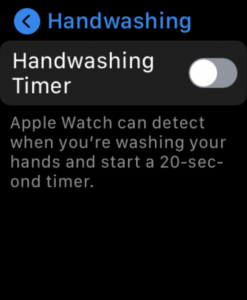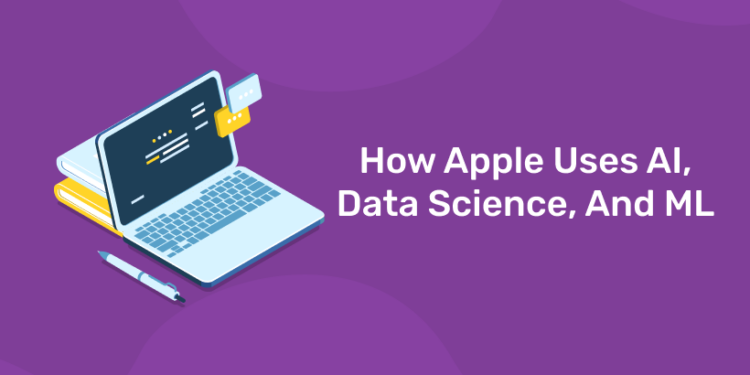Table of Contents
Technology has changed the face of many businesses. It has revolutionized the way products were sold or customers were targeted.
Technology is not static, it keeps changing or better say developing. Every second day we are introduced to a new technology. Apple uses Artificial intelligence, machine learning, and big data in the technologies that have gained popularity in the past few decades.
These technological inventions are equally beneficial for customers and businesses. It has narrowed the gap between the two ends of a market.
Back then when we did not have chatbots, we could not get replies to our basic queries. But today, we can just talk to chatbots and get our issue resolved, without even the need for human intervention. Almost every business is leveraging these modern-day technologies.
The Use of AI Technology in Apple Devices
The idea behind incorporating machine learning and AI into Apple products is to build amazing experiences for its consumers so they can do what they never imagined they could.
Apple engineers and researchers are collaborating to integrate software and hardware across its devices and improve user experiences while protecting their data. In this way, they are creating the world’s best storage, computing and analytics tools capable of taking on the most challenging problems in AI and machine learning.
Let’s recap some of the main AI solutions that Apple uses in its devices to make user experiences not only amazing, but smart and intelligent.
Join Our Data Science and Machine Learning Course! Enroll Here!
How Apple Implements AI in Its Devices
Sprinkled throughout iOS, macOS, iPadOS and watchOS are a number of features and updates that have AI and machine learning at their heart. Here are a few of the prominent ones you can find:
- FaceID
- Hand washing
- Handwriting recognition
- Native sleep tracking
- App Library suggestions
- Translate app
- Sound recognition
FaceID
FaceID technology uses facial recognition patterns to generate a specific model for your face. This way, it’s easier to identify your face so you can unlock or perform functions on your device.

You can also find FaceID in the camera connected to HomeKit. This is where it saves facial recognition models and patterns in your devices to ensure that the camera can identify someone in front of your home when they ring the doorbell.
FaceID in HomeKit also allows you to use photos tagged on your device to identify people and even announce them by name.
Handwashing
Handwashing is an AI feature in Apple Watch which can detect when you’re washing your hands.

The feature helps your Watch detect handwashing motions and sounds, which starts a 20-second countdown timer to ensure that you wash your hands effectively. Your Watch can also notify you if you’ve not washed your hands within minutes of returning home.
Handwriting recognition
If you have an iPad, you get handwriting recognition with your Apple Pencil, which recognizes images and identifies English and Chinese characters.
The machine learning model can identify and translate strokes into ASCii source characters from large amounts of typing data. Any text you write can be pasted into a document or searched online and converted into text instead of handwritten copy.
Top 10 New Technology Trends for 2023
Native sleep tracking
Apple announced the introduction of sleep tracking with watchOS 7, which takes a holistic approach to sleep by giving users valuable tools that help them get quality sleep.
The sleep tracking feature detects micro-movements using the watch’s accelerometer to capture when you sleep and how much sleep you get each night. This way, you get to see a visual representation of your periods of wakefulness and sleep, and view your sleep patterns on a weekly basis.
Through machine learning, the sleep tracking feature can classify all your movements, including when you are dancing, and detect when you’re asleep or awake.
App library suggestions
In the new App Library layout on iOS, you’ll find a folder that uses on-device intelligence to display suggestions of apps you’re likely to need next.
While this may be a small AI-powered feature, it’s especially useful if you often use particular apps every day, as it gets smarter the more you use your device.
Translate app
Translate is a new feature in iOS 14 that makes it easy to translate words and phrases on your iPhone in up to 11 languages. You can get definitions for translated words, have conversations across languages, save translations for quick access, and download languages for use offline.

Thanks to on-device machine learning, the app works completely offline, detects the languages being spoken, and translates your conversations in real-time. Be sure to update your OS to get all these and other useful changes.
Sound recognition
While sound recognition wasn’t mentioned during WWDC, the iOS 14 feature, which was first spotted by a Reddit user, can benefit people with hearing disabilities. The iPhone can be set to listen for different sounds including a crying baby, barking dog, siren, doorbell, smoke detector alarm and more.
All these and other AI and machine learning updates are just some examples of Apple apps and AI, which show the company’s interest in delivering small conveniences to its users.
There are absences from this list – like Siri (Apple’s digital assistant) which is AI-heavy and has a myriad of uses, but what we’ve listed here are the best examples of Apple’s approach to its users’ day-to-day needs.
Wrapping Up
Apple is the leading buyer of global AI companies, with the sole aim of improving the machine learning and AI capabilities of its products and services.
While investing in AI may not boost Apple’s near-term revenue growth, it will go a long way towards strengthening its hardware devices and maintaining loyalty to its services ecosystem.
For Apple, AI is a strong tactic that plays to its deeply rooted reputation for delivering software that simply works, while avoiding the iterative updates that are tech-for-tech’s-sake.
These Are the Must-Have Android Development Tools
How Apple uses Big Data
Seeing how Apple is always ahead when it comes to making use of technological advances, it definitely wouldn’t be that surprising to discover that the company uses big data extensively.
Having said that, what should not go unnoted is that this has not been always this way. Apple’s competitors like Google were already leveraging big data before Apple took the jump.
Apple has worked vigorously to make up for the lost time to the opposition. Presently, the company has become enmeshed in big data analytics, with the technology driving their considerable lot of decisions.
However, the company has always tried to be cryptic about how they utilize big data, but this doesn’t guarantee some intriguing bits of knowledge from not being divulged.
It is quite evident the company has an upper hand over its competitors. Apple has not only products that are highly popular but also are designed to capture valuable data. This is the reason behind Apple’s ease of access to crucial insights on consumer behavior and other important data.
Below are some ways Apple uses Data Science in its applications, products, and services.
Looking for a Data Science Career? Explore Here!
Tracking In-App Purchases
Apple’s app store helps Apple earn revenue from businesses worldwide. Apple keeps track of all the transactions on the applications available in its app store. Whenever a user buys any service from any application on an iPhone, Apple tracks and records the transaction.
If any application crosses an annual revenue of $1 million from in-app purchases on an iPhone, Apple charges a percentage of overall revenue as a platform fee. So Apple analyzes the nature of all the transactions on all the applications available on its app store and charges platform fees on in-app purchases. It helps Apple earn revenue from businesses worldwide.
Analyzing Heart Health
Apple Watch has many competitors today. But what makes it different from its competitors and worth its cost is how Apple uses Machine Learning models and many other technologies to analyze the heart health of its users.
Most of the smartwatches in the market can detect your heart rate. But the machine learning models used in the Apple Watch have made it possible to predict heart failures. Apple Watch also analyzes and sends high and low heart rate notifications that enable the use of its smartwatch in the healthcare industry.
Keyboard Suggestions
The keyboard in iPhones, Macbook Pros, and iPads learn from what you type to optimize the overall typing experience. A machine learning model is used in its devices by Apple to learn from what you type on your keyboard over time.
It helps predict the next word, recommends the most relevant emoji you can use instead of the typed words, and improves the overall typing experience to help you make fewer typing mistakes.
Are you aspiring for a booming career in IT? If YES, then dive in |
||
Full Stack Developer Course |
Python Programming Course |
Data Science and Machine Learning Course |
Areas of big data use by Apple
The data is utilized by the company to decide on the best approach towards consumers with its new products and services.
1.If we talk about one area in particular that has benefited from big data analytics it is application design.
Using big data Apple can discover how people are using apps in real life and alter future designs to fit with customer tendencies.
TheApple Watch is a good example of Apple’s strategy of capitalizing on big data. The Apple Watch has the potential to revolutionize not just wearables in general but data gathering.
Apple can now capture data on what customers do during the day. Realizing the potential of big data with the Apple Watch, the company went to join hands with IBM. The partnership intends to make the most of digital health information.
2. Using big data analytics, Apple intends to keep track of people’s health and improve their lifestyles.
The information collected can be utilized to treat sickness, prevent the rapid spread of diseases, and also provide better protection against preventable sickness to its people. This partnership also aims at creating health-related mobile applications that can be then used with Apple devices.
All things considered, Apple has just started to expose what it is equipped for with big data, and wearable gadgets might be the area that sees the most improvement in the coming years.
Looking for a Data Science Career? Explore Here!
How Apple is Using Big Data
Apple is often on the cutting edge of technological advances, so it probably shouldn’t be a surprise that the company uses big data extensively. Having said that, it’s important to note that it wasn’t always this way. Other businesses like Google were heavily involved in big data years before Apple took the leap, but Apple has worked tirelessly to catch up to the competition. Now, the company has become enmeshed in big data analytics, with the technology driving many of their most important decisions. It’s true that Apple remains highly secretive about how they use big data in many cases, but that hasn’t prevented some interesting insights from being divulged. By learning how Apple is using big data analytics, other companies can get a better view of how best to utilize the incredibly versatile technology.
Of course, Apple is in an advantageous position when compared to many other businesses. Their products are not only highly popular, but they’re already designed to capture valuable data. That’s how the company is able to gather information on customers relatively easily. It’s all that data that helps Apple determine how best to approach new products and services. One area in particular that has received a boost from big data analytics is application design. Applications are the useful tools many people have on their smartphones and tablets, and those tools can collect data on exactly how people use them. This is an important distinction to make, since in the past, designs were made intending to force people to use applications a certain way. Now, Apple can discover how people are using apps in real life and alter future designs to fit with customer tendencies.
The same idea for improving application designs can be used for producing Apple devices. Apple now has loads of data on how customers use their iPhones, Macbooks, and iPods, which gives them unprecedented information they can then use when designing new products or the latest versions of existing devices. The entire point behind using big data in this manner is to improve the customer experience. This also allows Apple to test out new features beforehand and determine what consumers would prefer before releasing a product to a mass audience.
One area of particular excitement regarding the use of big data is wearable technology, and Apple is hoping to explore new territory with its recently released Apple Watch. While Apple has already been collecting data on its customers, it now can do so at a record pace. The Apple Watch has the potential to revolutionize not just wearables in general but data gathering. Apple can now capture data on what customers do during the day. This is mostly done as a way to measure and improve people’s health. Sensors can collect information such as how many steps a person walks, their temperature, how much they eat, and numerous other factors that are then sent to Apple’s data warehouse for careful analysis. This technology is still in the early stages, but the potential behind it is intriguing.
In fact, the potential of big data with the Apple Watch has lead to a partnership between Apple and IBM designed to make the most of digital health information. Using big data analytics, Apple hopes to collect information on whole populations to measure health and improve lifestyles. This information may be used to treat illnesses, prevent the rapid spread of diseases, and even provide better protection against preventable sickness. The partnership is also looking to use big data to create health-related mobile apps, which can then be used with Apple devices. All in all, Apple has only scratched the surface of what it is capable of with big data, and wearable devices may be the area that sees the most progress in the coming years.
All of these examples don’t even touch on Apple’s use of big data involving iTunes, their new streaming music service, or the iCloud, but it’s clear that big data plays a key role in many of Apple’s strategies and technical developments. With the help of big data analytics and Hadoop cloud, Apple has positioned itself as not just one of the best tech companies around, but one of the best companies period. That reign will likely continue into the future as Apple utilizes big data in new and exciting ways.
What is Machine Learning?
Why is machine learning important?
Machine learning is important because it gives enterprises a view of trends in customer behavior and business operational patterns, as well as supports the development of new products. Many of today’s leading companies, such as Facebook, Google and Uber, make machine learning a central part of their operations. Machine learning has become a significant competitive differentiator for many companies.
Summary
Apple is trying its best to utilize technological advances to improve its user experience. Artificial intelligence and its branch of machine learning are being used in different Apple devices to enhance user experience.
While big data is being used to keep track of a user’s activity. It too aims at giving users something they need.
Join Our Data Science and Machine Learning Course! Enroll Here!
FAQs
Q1 : How Apple Implements AI in Its Devices
Ans:
- FaceID
- Hand washing
- Handwriting recognition
- Native sleep tracking
- App Library suggestions
- Translate app
- Sound recognition
Q2 : What are the areas of big data use by Apple











